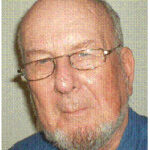We humans speak a wide variety of languages, and every language conveys its own culture. Time was when travel was uncommon enough and long-distance communication was slow and undependable enough that language groups were contained for the most part in their own separated areas. Most people spent their lives surrounded by the familiar.
No more. The broad world, its confusion and strangeness press in on every side. In Washington, D.C., where I live, the slow-moving city of my youth has vanished into the treasure-chest of memory. These days the proprietors of the dry cleaners I patronize are immigrants from Korea. Presbyterians, probably, but hardly the home-grown brand. The driver of the taxicab I hail as likely as not is a Muslim born in Eritrea or Nigeria. The head teller at my bank wears a turban. He’s a Sikh. The woman at the customer service counter has a dot of red on her forehead. She’s Hindu.
Oh, yes, I know that the United States and Canada as well, in a somewhat different way, have throughout much of their histories welcomed immigrants from afar and in short order have molded them or their children into reasonable simulacra of the native-born. Soon they were singing “The maple leaf, our emblem dear” or “Columbia, the gem of the ocean” right along with the rest of us.
These days, though, there seems to be a much wider sense that becoming a North American doesn’t necessarily entail giving up who you were. The vast array of the world’s peoples, religions, cultures is in our face all the time. It booms in on us from its points of origin via television, newspapers, radio, travelers, and, more powerfully each day, the internet. And even more immediate, it comes to live next door.
The implications for theological education are profound.
How do we live in harmony with people of other religions or none, sharing with others what is important to us about our faith without intruding on their right to be who they are religiously? If theological students don’t reflect on this question, and come up with persuasive and practical recommendations, we may well be lashed into the straitjacket formula enthusiastically promoted by many secularists: “Religious belief is a private matter that should never be discussed in public.”
Already in many areas of North America, especially in rapidly growing suburbs, we encounter resistance to the construction of buildings for religious purposes. They’re opposed as sources of noise, trash, potential intruders, and most sinful of all, traffic. And if the faith tradition espoused in the proposed structure is other than Christian or perhaps Jewish, that makes its entrance into the neighborhood all the more suspect.
Living together with people of other religions raises fears of syncretism for some Christians, fears that un-Christian practices or beliefs might be mindlessly adopted. C. Douglas Jay explores that danger elsewhere in this issue of In Trust (“Perspective“), but points out that translation of the Bible into local languages, a universal Christian practice, almost invariably involves adopting religious principles and terms in other religions that resemble those espoused by Christians. For example, the martyred Anglican catechist Bernard Mizeki, who is mentioned in my article on Friar Joshua Musiyambiri (“Field Notes“), noted that the Mashona people among whom he ministered, worshiped One God, whom they knew as Mwari. Mwari, and Mwari’s Christ, became what he preached.
M. M. Thomas, a great Indian Christian of the last century, once said that religions were like railroad trains on parallel tracks and their representatives like railroad conductors. If a Christian wishes to be in effective communication with a Hindu, he continued, he must get the train of Christianity moving at the same speed as the train of Hinduism on the neighboring track. Only then can he step safely from the one train to the other.
The physical intermingling of religious cultures that is under way today is for many people a new phenomenon, and there is little precedent now or in the past for its being achieved without bitterness and often bloodshed. Some historians look to a brief golden age in early medieval Spain when Christians, Jews, and Muslims lived together in amity. But it didn’t last.
Can we do better?



























